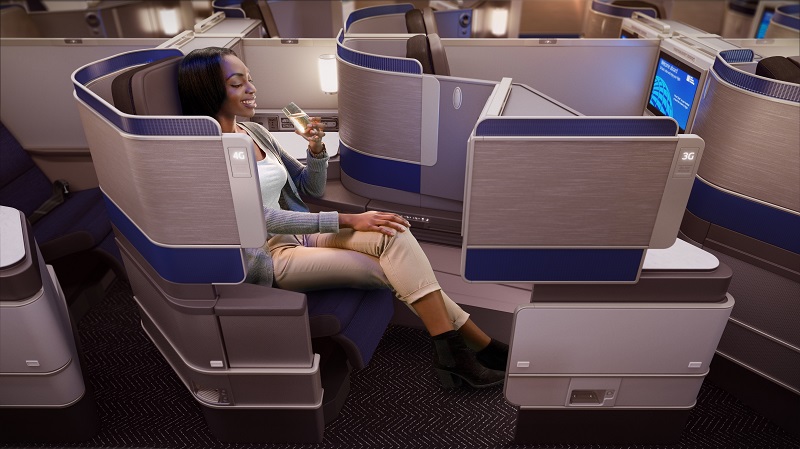Some three and a half years ago, United Airlines introduced Polaris, its new brand for its upgraded business class.
The boost was both in terms of hard product, being the launch customer for a highly customized version of Safran Seats’ Optima, and in terms of soft product, with new lounges, food and beverage concepts, partnerships with Saks Fifth Avenue, and so on.
The rollout of Polaris-the-seat, though, has been nothing short of glacial, and not the modern, global-warming, ice-caps-disappearing sort of glacial either.
READ: Jetstar unveils its new A321LR cabin
“We’re adding at least one aircraft with United Polaris seating every 10 days from now through 2020,” has been United’s line, although it comes with an asterisk that this is “based on the average of both retrofits and new aircraft (777-300ER and 787-10)”.
Any Boeing 777-300ER or 787-10 will have the new seats for certain.
At the time of writing, it’s a 63-percent crapshoot with either the 777-200ER (of which there are 51) or the 767-300ER (of which United has 38).
The 787-8 has recently moved to the “in progress” column, with one of the 12 aircraft currently being converted, but that’s it.
Overall, of the aircraft that have been started, that’s a 62-percent chance of getting Polaris.
However, you also have to realize that United hasn’t even started on the 767-400ER or the 787-9s, of which fleet-tracking website airfleets.net says United has 16 and 25, respectively.
The airline promises to start its large 787-9 fleet “in late 2019”, of which there is of course not much left, while the 767-400ER (the extra-stretched version taken up only by US carriers) is due to start sometime “in 2020”.
What that means is that you currently still have only a 48-percent chance of being on a United Polaris-branded flight with the actual Polaris seat.
(If you’re waiting for the lounges, it’s pretty much the same situation: five of the nine are done — Los Angeles, Houston, Newark, San Francisco, and Chicago — while Washington DC is currently under construction, with London Heathrow, Hong Kong and Tokyo Narita listed as “in planning”.)
Slow rollouts are by no means a problem unique to United: indeed, they are a wider problem in an industry where passenger experience marketing promises are ever greater, and where the gap between promise and reality is increasingly noticeable.
To whit, United’s passenger experience in business class is not the proper Polaris all its marketing has promised since mid-2016.
It’s the same decade-old seat that Continental launched back in its BusinessFirst days, the Diamond seat from Collins Aerospace (which is so old that this is the third name its manufacturer has had, previously being Rockwell Collins and before that B/E Aerospace).
Welcome aboard the United #Fauxlaris 787 business class. That really is a LOT of bedding! #PaxEx #thatjohnonUA pic.twitter.com/6YdYlz7i1v
— John Walton ?️? ✈️ ? (@thatjohn) March 19, 2017
I call this #Fauxlaris, and it’s still a disappointment: not only are the seats themselves subpar, but the mountain of duvets-blankets-pillows-and-all have nowhere to be stowed.
This might be fine on an airline from a country where “hmm, better bring the kitchen sink” isn’t the default carryon baggage allowance assumption, but not in the US.

The lesson for airlines is a stark one.
New seats are expensive, yes, and there are of course supply chain issues with their production.
Indeed, United had 777-300ERs sitting in Seattle waiting for Polaris seats to be delivered.
In the same way that an increasing number of airlines are seeking operational fleet redundancy by choosing multiple aircraft suppliers, choosing multiple seat manufacturers to produce hard product for those fleets, along the lines of what Etihad did with its Business Studio, may well make much sense for the future.
























